Cambodia's rapid urbanisation fuels child labour
Cambodia's rapid urbanisation fuels child labour
New buildings are popping up across Cambodia as its construction industry continues to flourish. However, a closer look into local brick production reveals the country's rapid urbanisation is driving one of the most common forms of modern slavery.
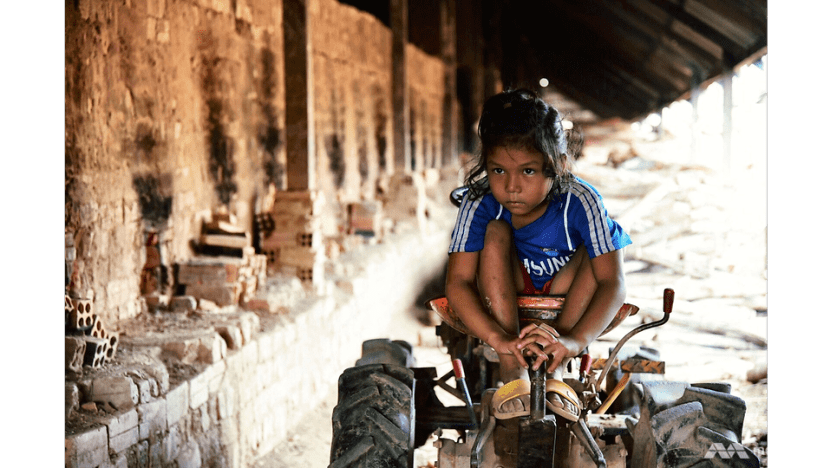
A young girl sits on a mini-tractor parked inside a brick factory on the outskirts of Phnom Penh. (Photo: Pichayada Promchertchoo)
New buildings are popping up across Cambodia as its construction industry continues to flourish. However, a closer look into local brick production reveals the country's rapid urbanisation is driving one of the most common forms of modern slavery.
PHNOM
PENH: Pak Rattana is a skinny 15-year-old with a simple daily routine:
He gets up early, eats breakfast and carries thousands of bricks to the
kilns.
The
boy lives at a brick factory in Chroy Changva on the outskirts of Phnom
Penh. Its dusty ground and fiery kilns have been his home, workplace
and playground for more than a decade.
While other children go to school, Rattana carries bricks.

Rattana sits with his younger sister during a break from work. (Photo: Pichayada Promchertchoo)
Every day, mostly in the blazing sun, he moves up to 10,000 blocks of clay from the factory’s yard to the furnaces, where they are fired at a very high temperature. Each day begins at dawn and ends in the dark, with one break in between.
There is no weekend for him, and hardly any reward.
“They
don’t pay until I finish one whole line,” the boy said, referring to
long rows of hundreds of thousands of bricks in the backyard, neatly
stacked up to dry in the sun. It takes him three days to finish one row
and in return, the factory owner pays him US$15.
“I don’t really know how much money I make. My mother takes it all.”
A CRIME DRIVEN BY URBANISATION
Rattana is part of the workforce that is building Cambodia as the country goes through a rapid urbanisation. New buildings are sprawling across its big cities, driven by the growing population in urban areas.

New buildings are sprawling across Phnom Penh. (Photo: Pichayada Promchertchoo)
According to the United Nation’s World Urbanization Prospects, the capital Phnom Penh alone is expected to grow by 30.7 per cent between 2015 and 2025, from 1.7 million inhabitants to 2.3 million. As the cities become more crowded, construction expands, and so does the domestic consumption of bricks.
In Chroy Changva, many factories are churning out hundreds of thousands of bricks every month to feed the hungry industry. Their workers are mostly poor and landless, many of them children under 18 years old, according to the International Labour Organization (ILO).
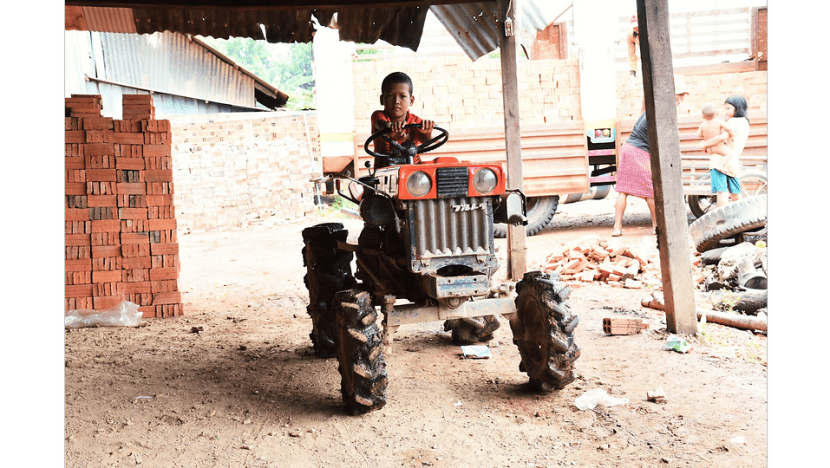
A boy drives a mini tractor inside a brick factory. (Photo: Pichayada Promchertchoo)
“Brick production is one of their employment opportunities and, of course, it’s a booming sector. Construction is skyrocketing every year,” said the national coordinator of ILO Cambodia, Tun Sophorn.
“Most
children at brick factories we’ve observed usually start working at the
age of 14 to 15. Clearly, that’s child labour. It’s illegal.”
WORST FORM OF CHILD LABOUR
Still, the practice continues in many parts of the country, where poverty is widespread and child protection lacking.
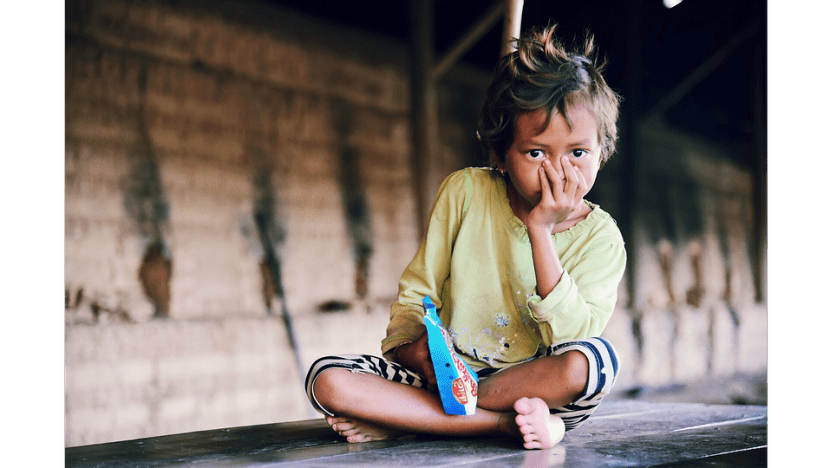
Pak Srey Noch, Rattana's sister, may need to drop out of school to help her parents work. (Photo: Pichayada Promchertchoo)
Cambodian law prohibits any child under 18 years of age from engaging in hazardous labour. Employers can hire children as young as 15 but only to perform “light work” that does not harm their health or mental and physical development.
Working at brick factories does not qualify.
“The nature of work in the brick factories would appear to fit under the ILO definition of the worst forms of child labour,” said Simrin Singh, a senior specialist on child labour and forced labour at ILO's Regional Office in Bangkok.
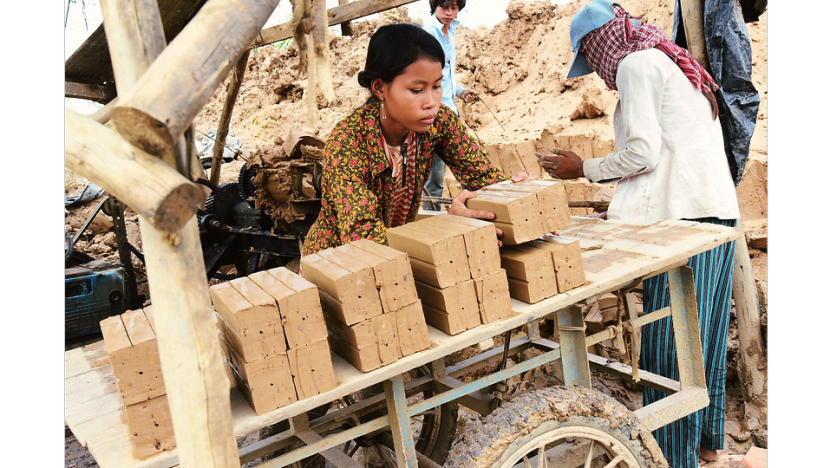
A young girl loads raw bricks onto a wheel barrow. It takes about ten days for raw bricks to dry in the sun. (Photo: Pichayada Promchertchoo)
According
to Singh, children at these facilities are often exposed to hazardous
levels of heat, dust and carbon monoxide. Moving heavy loads of bricks
also leaves them prone to back injuries, while particles from
diesel-fuelled machines increase the risks of respiratory illness, lung
cancer and leukaemia. Those who use brick-making machines are also
highly at risk of suffering amputation and, often, death.
Rattana’s parents, however, are not concerned.
“He
can help us work and earn more money. The work is very dangerous but I
don’t force him to do it; he’s not 18 yet. I just ask him to help,” said
his father, Pak Buntha, adding he has the same plan for his
six-year-old daughter, Pak Srey Noch.
“Definitely, I need their help."
PARENTS ENCOURAGE CHILD LABOUR
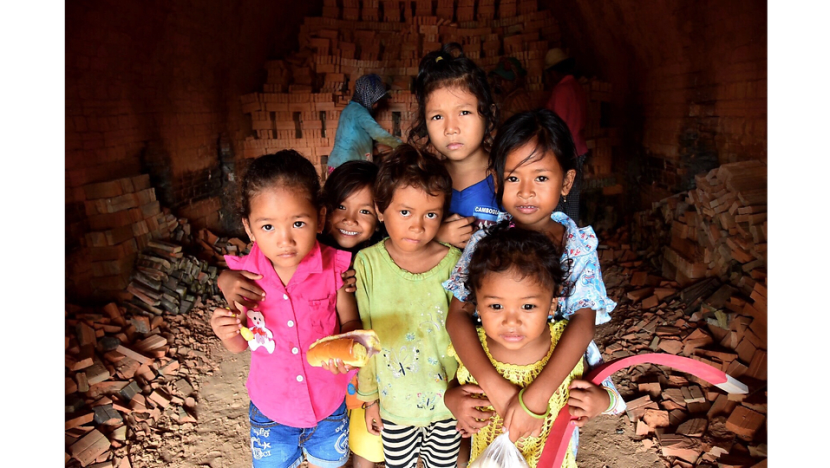
Young children stand inside a brick kiln. (Photo: Pichayada Promchertchoo)
In
Cambodia, one in ten children aged 5-17 are child labourers, with 5.8
per cent of them in the construction industry, ILO reported. The trend
is driven by several factors, from poverty to limited education access,
cultural acceptance of child labour and a lack of legal awareness among
parents and employers.
Rattana started carrying bricks when he was eight years old. His employer admitted he was aware of the legal issue but could not stop his parents from taking the boy to work.
“Members of NGOs often come to talk
to me about child labour and I respect that. I even encouraged the kids
to go to school and bought them school materials. But the challenge is
their parents. They keep taking their kids out of school and asking them
to help with their work at the factory,” said the man, who asked for
his name not to be used.
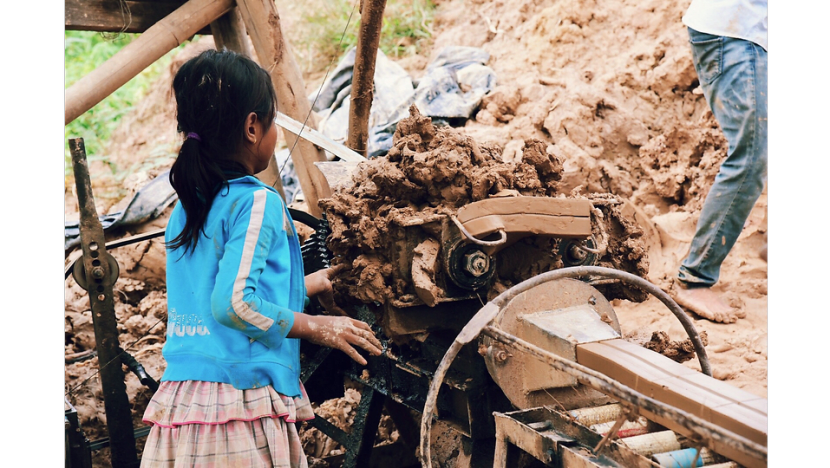
A young girl puts clay into a brick-making machine with bare hands. (Photo: Pichayada Promchertchoo)
Common tasks for young workers at brick factories include carrying and stacking bricks inside the kiln, operating and stoking the fire, and transporting clay and placing it in brick-making machines, which they sometimes operate.
Payment is determined by the amount of bricks produced or carried rather than a daily or monthly rate. Young employees are thus under pressure from their parents to work harder and longer for more money.
And with rare inspections by government officials at such facilities, there is little concern about being caught.

Workers unload bricks inside a kiln. (Photo: Pichayada Promchertchoo)
“Inspectors
have to do more to enforce the law. If they can conduct regular
inspections at brick factories, perhaps two to three times a year and
not once a year, that would be much better,” Tun said.
But
until then, the likes of Rattana, clothes ragged and red, will have to
keep working under scorching sun and in air full of dust.
“Working here isn't that bad," he said. "The most difficult thing is each day is long and I have to work so hard."
Follow Pichayada Promchertchoo on Twitter @PichayadaCNA